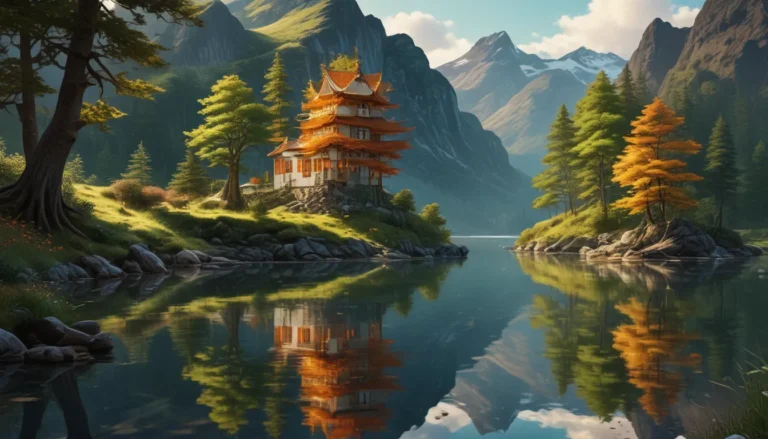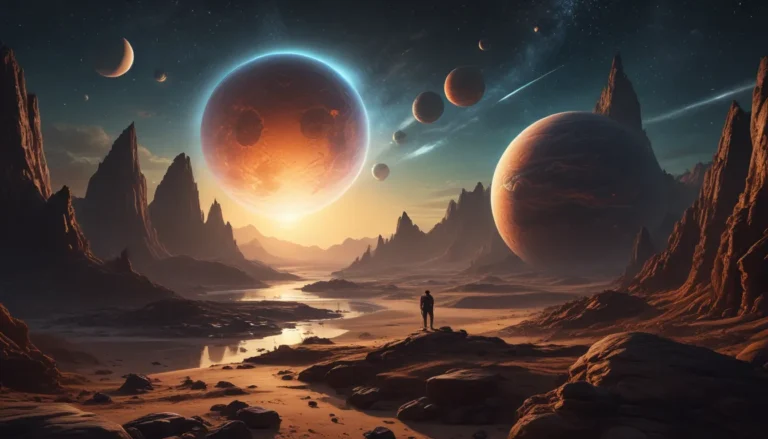The pictures we use in our articles might not show exactly what the words say. We choose these pictures to make you interested in reading more. The pictures work together with the words but don’t take their place. The words still tell you the important facts.
Ice is a captivating natural marvel that has intrigued scientists and nature enthusiasts for centuries. Its shimmering beauty and transformative qualities have left a lasting impression on those who have encountered it. Whether you have marveled at ice sculptures, enjoyed a chilled beverage, or danced on frozen lakes, there is no denying the allure of this frozen wonderland.
Unveiling the Mysteries of Ice
Ice is far more than just frozen water – it holds the power to shape landscapes, preserve history, and even influence the potential for extraterrestrial life. From its role in preserving ancient artifacts to creating breathtaking natural phenomena, ice plays a crucial part in our world and is essential for the survival of many cold-adapted organisms.
The Solid State of Water
When water molecules freeze, they come together to form a crystalline structure, giving rise to ice. This solid state of water can be found in frozen lakes, rivers, and glaciers, showcasing its diverse presence in nature.
The Density Dilemma
Contrary to expectations, ice is less dense than liquid water. When water freezes, it expands, causing it to float on water bodies such as lakes and oceans. This unique property of ice has significant implications for the planet's ecosystems.
The Versatility of Ice
While the freezing point of water is typically at 0 degrees Celsius or 32 degrees Fahrenheit, ice can exist at even lower temperatures, especially in extreme cold regions or controlled environments. This flexibility allows ice to manifest in various forms across different climates.
Ice: A Resilient Sculptor
One of the most remarkable aspects of ice is its role as a powerful agent of erosion. Glaciers, massive bodies of ice, have the ability to carve out valleys and reshape landscapes over thousands of years, leaving behind striking geological features.
The Many Faces of Ice Crystals
Depending on temperature and pressure, ice can crystallize into different structures, from hexagonal ice to cubic ice. These variations in crystal formations contribute to the diverse patterns and shapes seen in natural ice formations.
Ice: The Preserver of Time
In frozen environments like the Arctic and Antarctic, ice acts as a preservative for organic matter, including plants, animals, and ancient human remains. This preservation allows for the study of past ecosystems and the unraveling of historical mysteries.
Cool Companionship in the Kitchen
Beyond its natural wonders, ice plays a vital role in food preservation. It is widely used to keep perishable foods fresh, prevent bacterial growth, and is a key ingredient in the production of delectable treats like ice cream and frozen desserts.
The Playground of Winter
Ice serves as the foundation for various winter sports, from the elegance of ice skating to the intensity of ice hockey and the precision of curling. These activities would not be possible without the solid surface of ice.
Nature’s Masterpieces in Ice
From majestic icebergs to enchanting ice caves and delicate icicles, ice formations create awe-inspiring landscapes that draw visitors from around the globe. These natural wonders showcase the beauty and grandeur of ice in its various forms.
Ice: The Water Cycle Connection
As snow and ice melt, they contribute to the replenishment of rivers and underground water sources, playing a vital role in the water cycle. Ice's ability to transition between solid and liquid states is essential for maintaining the Earth's water balance.
Echoes of the Past in Ice Cores
Scientists extract ice cores from glaciers and polar ice caps to study ancient climate records, providing insights into past climate conditions and atmospheric composition. These icy archives offer a window into the history of our planet's climate.
Cool Comfort in Hot Weather
Ice serves as a versatile cooling agent, whether in the form of ice cubes chilling beverages or crushed ice lowering body temperature in hot weather. Its ability to dissipate heat quickly makes it an indispensable tool for staying cool.
Frozen Artistry
Ice sculptors craft intricate sculptures by carving and shaping blocks of ice into stunning works of art. These sculptures showcase the creativity and skill required to transform a simple block of ice into a masterpiece.
A Lifeline for Cold-Adapted Species
Many cold-adapted organisms, such as polar bears and penguins, rely on ice for their survival and hunting activities. Ice provides essential habitats and resources for these species to thrive in harsh environments.
Healing Power of Ice
Cold therapy using ice packs is a common treatment for reducing inflammation, numbing pain, and promoting healing in case of injuries. The cooling effect of ice helps alleviate discomfort and speeds up the recovery process for various ailments.
Ice Beyond Earth
Ice is not exclusive to our planet; scientists have discovered ice on other celestial bodies, such as Mars, Enceladus, and Europa. These findings hint at the possibility of extraterrestrial life existing in icy environments beyond Earth.
Unlocking the Wonders of Ice
In conclusion, ice stands as a testament to nature's creativity and resilience, shaping landscapes, preserving history, and sustaining life in various forms. Next time you encounter ice in its myriad manifestations, take a moment to appreciate its beauty and significance in the intricate tapestry of our world.
FAQs
- How does ice form? Ice forms when water reaches or falls below 0 degrees Celsius, causing water molecules to rearrange into a crystalline lattice structure.
- Are all ice crystals the same? No, ice crystals vary in shape and size based on factors like temperature and humidity, leading to diverse crystal formations.
- What is the role of ice in the water cycle? Ice acts as a storage form for water, releasing it as it melts to replenish rivers, lakes, and oceans during the water cycle.
- Can animals survive in icy habitats? Yes, many animals have specialized adaptations to survive in icy environments, showcasing their resilience and ability to thrive in extreme conditions.
Explore and Learn with Us
At Alphacoders.com, our dedication to providing engaging and accurate content drives us to deliver valuable insights and information on a wide range of topics. Each fact on our site is contributed by real users like you, ensuring a diverse and reliable database of knowledge. Trust in our commitment to quality and authenticity as you delve into the wonders of ice and beyond.






